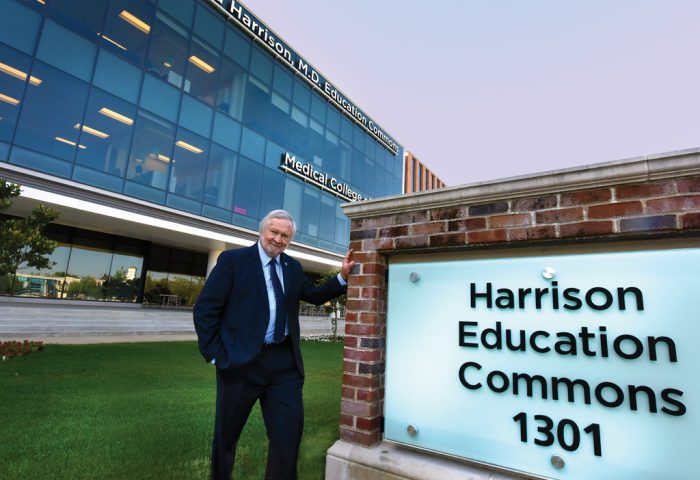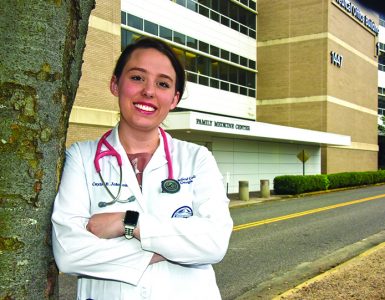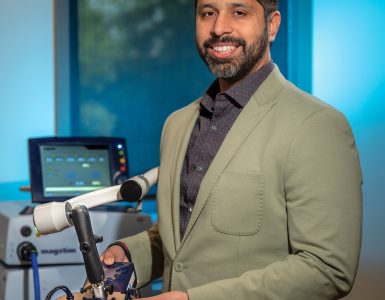In 1828, the Medical College of Georgia — a foundational institution of Augusta University — was created on the principles of medicine and health. And for 188 years, MCG has dedicated itself to these principles for the benefit of Georgians. The entire state of Georgia is indeed our campus. We have branch medical campuses in Savannah, Brunswick, Albany and Rome, along with a partnership medical campus in Athens, and we have more than 600 clinical training sites across the state.
MCG is Georgia’s only public medical school, and one of the most venerable and largest medical schools in the country. Our faculty is composed of talented teachers, compassionate clinicians and creative researchers, seeking new and innovative health care solutions. And while we have a number of outstanding programs, we have developed particular areas of strength that tackle some of the state of Georgia’s most pressing health challenges: cancer, cardiovascular disease, diabetes and stroke. Our research enterprise is supported by $41.2 million of National Institutes of Health funding.
The AU Health System, a critical partner in our educational mission, consists of the 478-bed AU Medical Center adult hospital, the 154-bed Children’s Hospital of Georgia and AU Medical Associates, comprised of more than 450 physicians. We are responsible for providing health care for the correctional and juvenile justice systems of Georgia, and we are now in charge of running the Roosevelt Warm Springs Rehab Hospital. We have begun an outreach program to assist Georgia’s struggling rural hospitals, and we are preparing to break ground on a state-of-the-art health care campus in Columbia County.
We are incredibly proud of what MCG has accomplished, but we must set our sights even higher. In my inaugural address, I shared my vision for MCG: to become a top-50 medical school as measured by NIH research funding. Currently, our neighboring states of Alabama, South Carolina, North Carolina and Florida all have public medical schools in the top 50; Georgia does not.
So what will it take for us to get to the top 50? The answer is straightforward: We need to move our annual NIH funding total from the current $41.2 million to $80 million to reach the threshold of this elite group. Getting that additional $40 million dollars of NIH funding will take investments in our research faculty and our physical infrastructure.
We must invest in 200 new investigators, clustered in strategic areas: cancer, cardiometabolic, neuroscience, regenerative, genomics and public health. These are areas that will directly benefit the health of Georgians, build on emerging areas of strength and coincide with areas of national interest. Two hundred investigators will require us to add approximately $40 million dollars in recurring salary costs, as well as $200 million in start-up packages that will get their labs up and running so that they can be competitive for precious NIH dollars.
Additionally, we must upgrade our research facilities. MCG has suffered from a lack of investment in its research physical infrastructure. From 1978 to 1996 — a period of nearly 20 years — no major research building was constructed on campus. The Interdisciplinary Research Building was constructed in 1996, with an addition in 2004. Cancer research has seen some growth, with the Cancer Research Building in 2006 and the Clinical Cancer Building in 2008. Thanks to several generous gifts, we will add 72,000 square feet of new space in 2018 when we dedicate the M. Bert Storey Research Building. In order to support 200 new investigators, I estimate we need approximately $152 million in new or renovated research space and a $40 million investment in new core laboratory facilities.
We must also address our aging hospital. Talmadge Hospital, which is now AU Medical Center, was built in 1954. Changes in the way we care for patients and in the way we provide medical education in a clinical setting make our 63-year-old hospital a very challenging environment. In order for our growing clinical needs to be met, we must address this very significant capital project.
The road to top 50 is not just about reaching a particular funding target. The progress made during this journey will benefit every aspect of MCG. For example, the number of full-time faculty — both in the basic science and clinical areas — is far below the national average for public medical schools as reported by the Association of American Medical Colleges. And our revenue-per-student numbers lag badly behind the national average. We must build a research and clinical platform that is large enough to support our medical school.
At this time, our needs are greater than our current resources. And the current federal and state financial landscape will require us to rely on support from those individuals, corporate and foundation partners who share our mission and vision more than ever before.
We are grateful for so many who have come alongside us to lend your time and your financial support to the important work of Augusta University. Over the next several months, you will be hearing more about our upcoming comprehensive fundraising campaign. That campaign will provide an opportunity for our faculty, staff, alumni and friends to financially partner with us to move Augusta University and the Medical College of Georgia forward in important ways. If you have ideas or suggestions for me as I work with my staff to plan this campaign, I would welcome them.
I am proud of the history of the Medical College of Georgia, and I am thrilled to be leading our great university into the future. With the support of those who love MCG, anything is possible.
Brooks Keel, PhD
President, Augusta UniversityCEO, AU Health System










